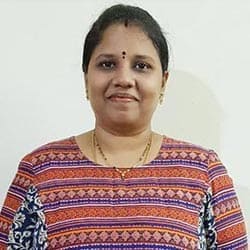Whales are one of the most fascinating, incredible, and elusive animals known to roam in the open seas worldwide. They share the ocean with various sea creatures. These humongous yet gentle giants may look like fish, but they are not. The largest aquatic animals belonging to the order Cetacea include Dolphins and Porpoises, and mammals.
There are many species of whales, such as sperm whales, killer whales, humpback whales. However, there has been a steady decline in their population; hence, children need to learn about these majestic creatures and the crisis these species face.
Here are some whale facts for kids to intrigue their curious minds.
100 Whale Facts For Kids
- Whales are one of the few mammals that spend their entire life in water.
- Whales are marine mammals which means that calves grow inside their mothers till they are born. Then, the calves are nursed and taken care of by the mothers till they reach a certain age.
- Just like us, whales also breathe air. Hence, they need to reach the water’s surface to breathe as they can’t breathe underwater.
- Whales have a blowhole on top of their heads. When they reach the surface, they take in air through this blowhole.
- Being warm-blooded marine animals, whales develop a layer of fat known as blubber to stay warm in icy climates.
- The whales need to have blubber to keep themselves warm as the extreme climate they live in can be very harmful to them and, in some cases, lead to their death.
- A group of whales is called a pod.
- A pod has anything between 2-200 whales.
- A male whale is called a bull.
- A female whale is called a cow.
- A baby whale is known as a calf.
- Several species of whales are classified on what they feed upon into two types: baleen whales (Mysticeti) and toothed whales (Odontoceti).
- Baleen whales such as humpback whales use their fringed plates to feed on krill (shrimp-like creatures) and planktons.
- Toothed whales like orcas have teeth and feed on various types of fish (salmon, tuna, cod, etc.), squids, and some small sea mammals like seals, etc.
- Toothed whales have one blowhole, whereas baleen whales have two blowholes.
- Most of the whales are toothless. Instead, they use a plate of comb-like fibers known as baleen to filter small crustaceans and other small creatures.
- Baleen whales like Humpback whales and blue whales are known to sing.
- Though it is not known why the whales sing, it is believed that they make sounds or sing to attract a mate or to watch their calves. In addition, some whales may use it to communicate with each other or to find prey.
- The whale songs can be heard for miles and can last up to 30 minutes.
- Scientists estimate that bowhead whales live for more than 200 years and killer whales live for more than 100 years.
- Whales half-sleep. Yes, you heard right. To keep them from drowning, they do not sleep fully like other mammals.
- Whales sleep by shutting only half of their brains for rest. The other half of the brain remains alert to breathe when required and prevent themselves from drowning.
- Sperm whales sleep vertically, keeping their noses above water.
- Despite their vast size, whales are known to be fast swimmers. By using their tails in up and down directions, they can reach the speed of up to 30 miles per hour.
- Whales generally travel in pods. Large whale pods are formed when they migrate.
- Whales communicate by using gestures such as tail slapping, breaching, charging towards each other to let the others know that food is around, mate, or even to alert about any danger.
- Usually, whales can stay underwater for approximately 35 minutes. But some species can remain for up to 90 minutes underwater.
- Whales have unique lobes or flukes on their tails. Each lobe is distinctive from the other and has traits that help to identify the particular whale species.
- Do you know? Whales are considered ingenious and intelligent animals. Moreover, some species are known to firm a bond with humans.
- Toothed whales use echolocation. It means that whales create unique sounds to find their way around.
- Once a sound is created, it bounces off the nearby things and then back to the whale, thus giving them a lowdown about the surroundings.
- Thus, with the help of these sounds, whales can estimate the distance, size, and shape of the objects, which helps them avoid danger, find food and avoid collisions.
- Whales are considered as one of the most intelligent animals on earth. They can communicate, work, plan, teach and do things together.
Facts About Blue Whales
- Blue whales (Balaenoptera musculus) are the largest known animals that ever existed, both living and extinct.It can reach up to 100 feet long and weigh about 200 tons.
- Its tongue weighs almost as heavy as an average size of an elephant and its heart nearly as heavy as a car.
- Blue whale calves are the world’s largest babies.
- They weigh around two tons at birth and steadily gain about 200 pounds each day for the first year of their birth.
- The calves feed mainly on krill.
- It is estimated that there are less than 3000 blue whales
- Blue Whales were hunted for many years until they almost became extinct for their oils and blubber.
- But they are considered endangered species and are now protected under the 1966 International Whaling Convention.
- Apart from humans, Orca and great white sharks are the predators of blue whales.
- Surprisingly, Blue Whales are found in all the oceans except the Arctic.
- These mighty sea creatures follow a seasonal migration pattern.
- Blue Whales feed upon krills in polar waters during feeding season and then travel to tropical waters for mating and giving birth.
Facts About Killer Whales (Orca)
- Did you know? Despite being known as killer whales (Orcinus orca), they aren’t actually whales.
- Orcas are one of the largest species of dolphins ever known.
- The killer whale is an apex predator that means no one preys on them except humans.
- These killer whales are robust but streamlined and have large, paddle-like flippers.
- Male killer whales are larger than females.
- Males are about 9.5m long and weigh around 8 tons, whereas females are 7 to 8.5m long and weigh approximately four tons.
- At birth, the calves are 2 to 2.4m long.
- Killer whales are cosmopolitan and are found in deep and coastal waters from polar to tropical regions.
- Their diet consists of dolphins, squids, fish, etc.
Facts About Humpback Whales
- Humpback whales (Megaptera novaeangliae) are found worldwide depending on the season and time of the year.
- They are enormous and can grow up to 60 feet long and weigh up to 40 tons.
- They have the longest flippers growing up to 16 feet long.
- The tail of humpback whales can grow up to 18 feet wide.
- In this species, the females are bigger than the males.
- These whales like to spend summers at high latitude feeding grounds and warm waters near the equator during winters.
- Humpback whales were almost hunted to extinction, but they are now protected under various acts.
- Considered to be the most active species, humpback whales are known for their acrobat moves.
- Their name is humpback because they arch their backs before they dive into the water.
Facts About Sperm Whales
- Sperm whales (Physeter macrocephalus) are the largest toothed whales and are widely distributed around the world.
- Their name is derived from spermaceti that is found in their heads. The spermaceti is basically an oil sac that helps the whales to focus on their sounds.
- Spermaceti organ is a crucial part of their echolocation system.
- Sperm whales were the primary target of poachers for many years because of spermaceti that can be used in candles, lubricants, and oil lamps.
- This commercial whaling almost wiped out the population. But now, these endangered animals are protected under the Marine Mammal Protection Act and Endangered Species Act.
- Sperm whales have the biggest brain among all the living things on Earth. Their head is more than one-third of their body length.
- Males weigh around 50 tons.
- An adult whale eats up to two tons of food daily, around three percent of its body weight.
- They can dive as deep as 3000 feet and can hold their breaths for up to 90 minutes while deep diving.
Fun Facts About Whales For Kids
Let us learn some more fascinating facts about various species of whales.
- Whale mothers are very protective of their offspring. They usually swim to specific, safe places in the ocean to give birth to their babies and nourish them until they are strong enough to fend for themselves.
- Depending on its species, a female whale has a gestation period of 10 to 17 months.
- Male humpback whales, found in the US, are known to sing complex songs during winter breeding areas, and their songs can be heard miles away and can last up to 20 minutes.
- Killer whales are highly social and travel in groups that are “matrifocal,” which is a family unit centered on a mother whale.
- Beluga whales have flexible necks that allow them to move their heads a lot.
- They have a complex communication system that includes chirps, clicks, whistles, etc. hence; they have the nickname “canaries of the sea.”
- In Northern American waters, minke whales are the smallest baleen whale.
- Grey whales are known to make the longest annual migration trips which are about 10,000 miles roundtrip.
- The whale’s buoyancy and surface feeding habit make them prone to collisions with things around them.
- Humpback whales do not eat for five to seven months in a year.
- They feed on the fat reserves from their bodies. This is because they undertake a migration journey to Antarctica.
- Unlike humans, whales do not exhale to produce sounds.
- Whales only breathe through their blowholes. The whale’s trachea is connected to its blowhole instead of its mouth like humans.
- Whales come in many different shapes and sizes. There are around 79 to 84 different species known to man.
- Blue whales live around 80-90 years in the wild.
- Whales are found in both the southern and northern hemispheres. But do you know they never meet or breed together? Their migration is well-timed so that they are never in the same breeding areas at the same time.
- The whale’s age can be estimated by looking at the wax plug present in its ears. The plug has a pattern of layers, and when cut lengthwise, the scientists can count and estimate their age.
- Whales also make many mistakes during migrations, but they usually don’t realize those mistakes until they are stranded.
- The whale’s lower lip looks like it is smiling. But it is not a genuine smile. This look is due to the blubber present in the whale’s head that prevents the muscles from the face from reaching the surface.
- Though whales may look scary, they support different creatures like sea barnacles, sea lice, etc., that attach themselves to the whale’s skin and live there mutually.
- All species of toothed whales have melons on their foreheads.
- These melons are a mass of tissues that are vital for whale calls, echolocation, and communication.
- During migration, whales swim and rest for a short period.
- When migrating, they swim close to the shore and keep blowing and jumping out of the water. This jumping is called “breaching.”
- Some whales, while hunting, keep blowing bubbles and encircle their prey to trap it.
- Blue whales are large enough to fit 100 people inside their bodies, but the food pipe is so tiny that a human cannot pass through it.
Whales are at the top of the food chain and play an essential role in maintaining eco-balance. Yet, many species are on the brink of extinction. So, let’s encourage our kids to learn various whale facts and maybe someday protect these gentle giants.
The following two tabs change content below.




































